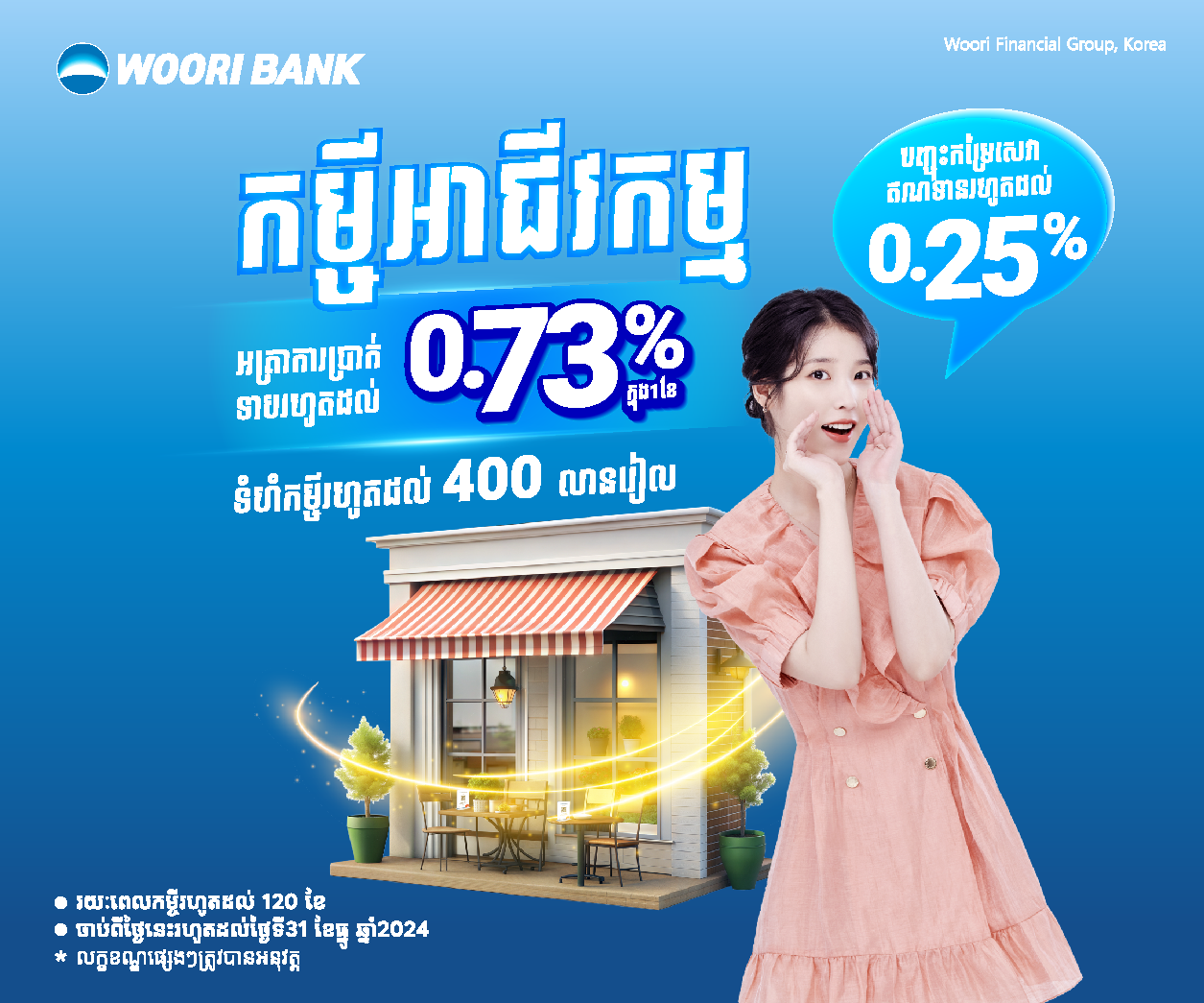
A highly frequented shop in Aeon mall on Sothearos Boulevard offering a wide array of affordable household goods.
As consumer habits shift while the Cambodian middle class emerges, the door has opened for international retail chains to nest themselves in upcoming shopping centres planned for the capital. However, achieving high occupancy rates could become a struggle with increased supply of retail space - especially in locations outside the city center.
According to a recent report released by CBRE Cambodia, by the end of 2017, the capital’s retail supply will surge to an overall total of 455,348 square metres from the 214,520 square metres today, a 112.26 per cent increase.
This is due to the completion of projects such as Parkson’s Phnom Penh Centre, Lion City, HongKong Land’s Exchange Square and Oxley’ WorldBridge’s The Bridge project - all of which are slated for completion over the next two years.
“The rise of retail space and growing consumer demand are driven by a combination of population growth, increased disposable household income and annual rises in tourist arrivals,” said Ann Thida, senior associate at CBRE Cambodia.
With the success of Aeon Mall, which has retained a 100 per cent occupancy rate according to CBRE, the report stated that overall, centrally located retail centers have benefitted from this in terms of lowering vacancy rates. Vacancy rates declined from 25 per cent in the second quarter of 2014 to 22 per cent in the second quarter of 2015.
Nevertheless, “retail complexes, delivered in secondary locations, continue to struggle to attract retailers,” the report read.
But with the upcoming supply, experts in property and retail believe that these new projects could fare well providing numerous factors are taken into account and handled properly.
According to Ross Wheble, country manager for Knight Frank Cambodia, many successful international retailers could be enticed to secondary locations outside of the city center due to accessibility, larger parking lots and lower land prices, which in turn results in lower rental rates.
“Phnom Penh is growing in every direction, which is largely attributable to infrastructure improvements,” Wheble said, adding that consumers would likely prefer traveling to a shopping mall outside of the city centre providing it was well developed.
Likewise, Thida explained that these shopping malls would benefit with the rise of successful residential projects on the outskirts of the city.
“[If] we continue to see a growth in quality residential schemes within secondary locations, the viability of supporting [these] retail projects will increase,” she said.

With Aeon mall’s success primarily driven by attracting shoppers who spend on food, beverage and entertainment, over luxury goods, Wheble explained that this has built a recipe to follow.
“As long as a mall’s tenant mix meets the demand of its target market and differentiates itself from what’s already in the market, suburban malls have every chance of success, particularly as the population of Phnom Penh expands,” he said.
Daniel Li, Group CEO of Cambo-Sia International Co Ltd, echoed Wheble’s statement, adding that the ability to attract a proper mix of tenants is key. This comes down to proper mall management.
“The mall’s management plays a very critical role in selecting tenants, and it should not be based on who is willing to pay higher prices for the location but which brand, product or service offering will draw the crowd in,” Li said. “There is a science to it and more experienced mall operators will have refined the process.”
“Most mall operators have in mind the types of tenant mix they want, and it is up to them to attract brands that work rather than to try for lesser known brands,” he said. “So it is in the mall’s interest to select tenants that would be successful in bringing in shoppers.”
Nevertheless, he noted that while high-end consumers still prefer to travel to neighboring countries for luxury, name-brand products, domestic malls prime the pump.
“It is a lifestyle thing for more affluent residents, hanging out with their friends at the mall for coffee and the need to feed the buying urge before the next big shopping trip abroad,” Li said.
While Wheble said that the overall occupancy rate for Phnom Penh would likely decline over the medium-term as supply increases, the number of retail operators enter the market shows a strong level of confidence.
“These retailers believe that the disposable income of consumers in Cambodia is increasing at a fast enough rate to sustain the demand for this new retail supply,” he said.
According to Li, large shopping malls outside of the city and near tourism hotspots could achieve high occupancy merely because they haven’t been able to open at Aeon mall due to the lack of vacancies.
“There are a number of new brands who unfortunately haven’t been able to open at Aeon due to high competition for available spaces, new venues will give them a much waited opportunity,” he said.
Contact PhnomPenh Post for full article
SR Digital Media Co., Ltd.'#41, Street 228, Sangkat Boeung Raing, Khan Daun Penh, Phnom Penh, Cambodia
Tel: +855 92 555 741
Email: [email protected]
Copyright © All rights reserved, The Phnom Penh Post







